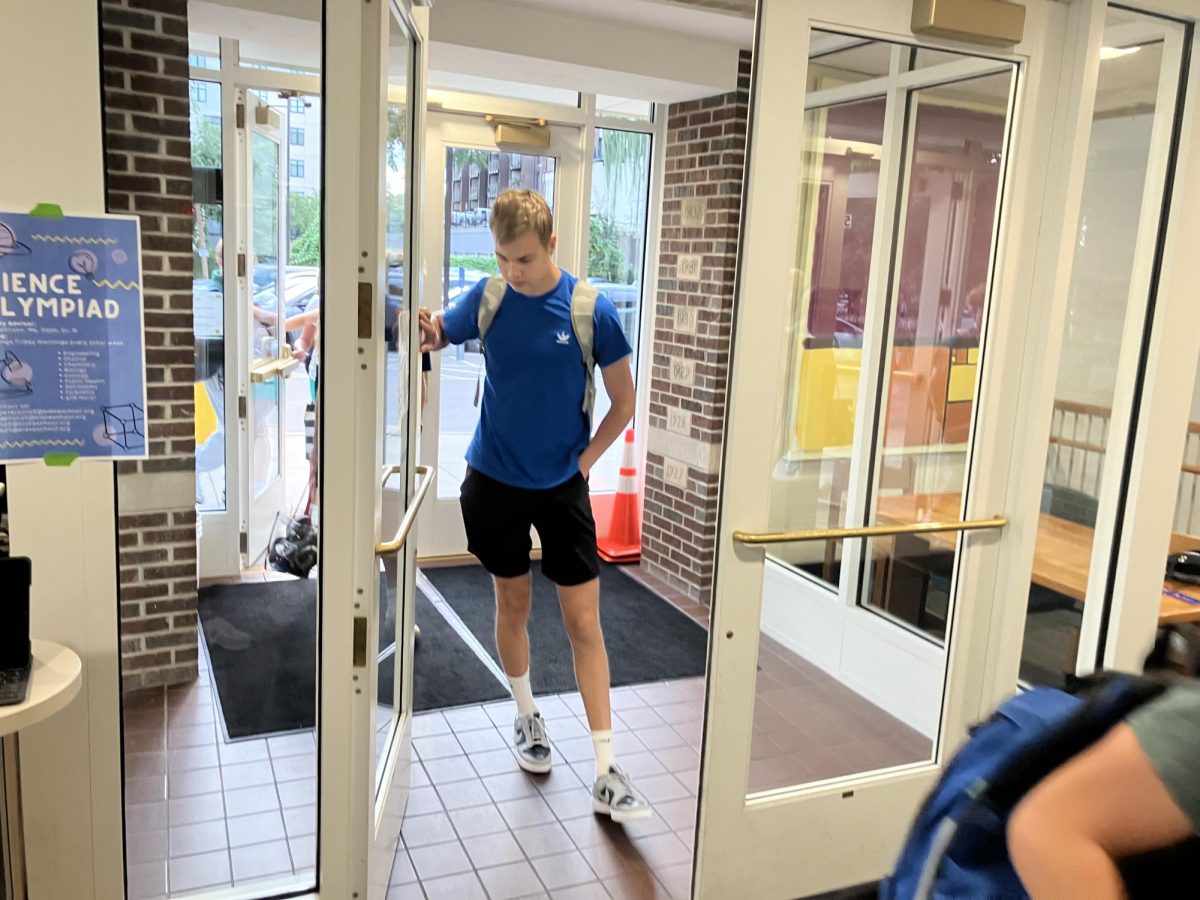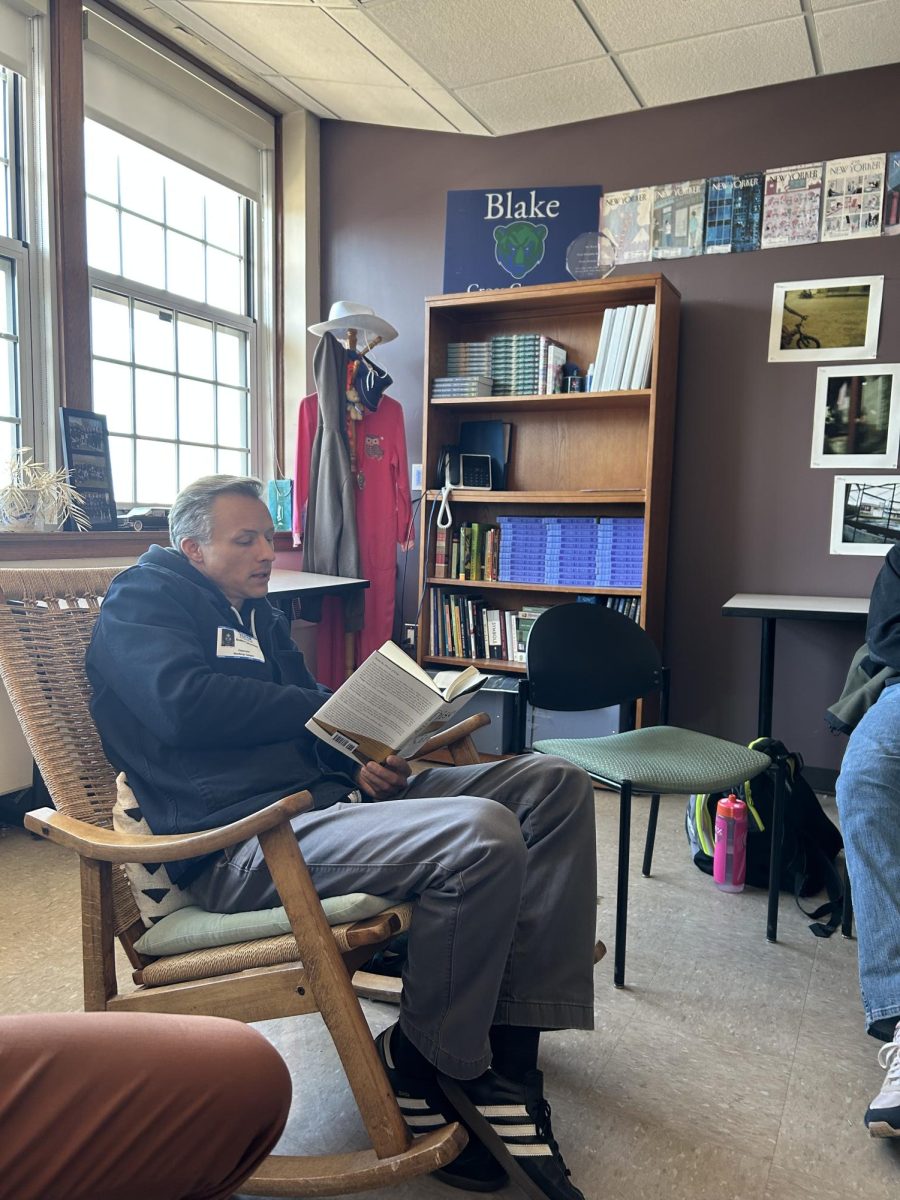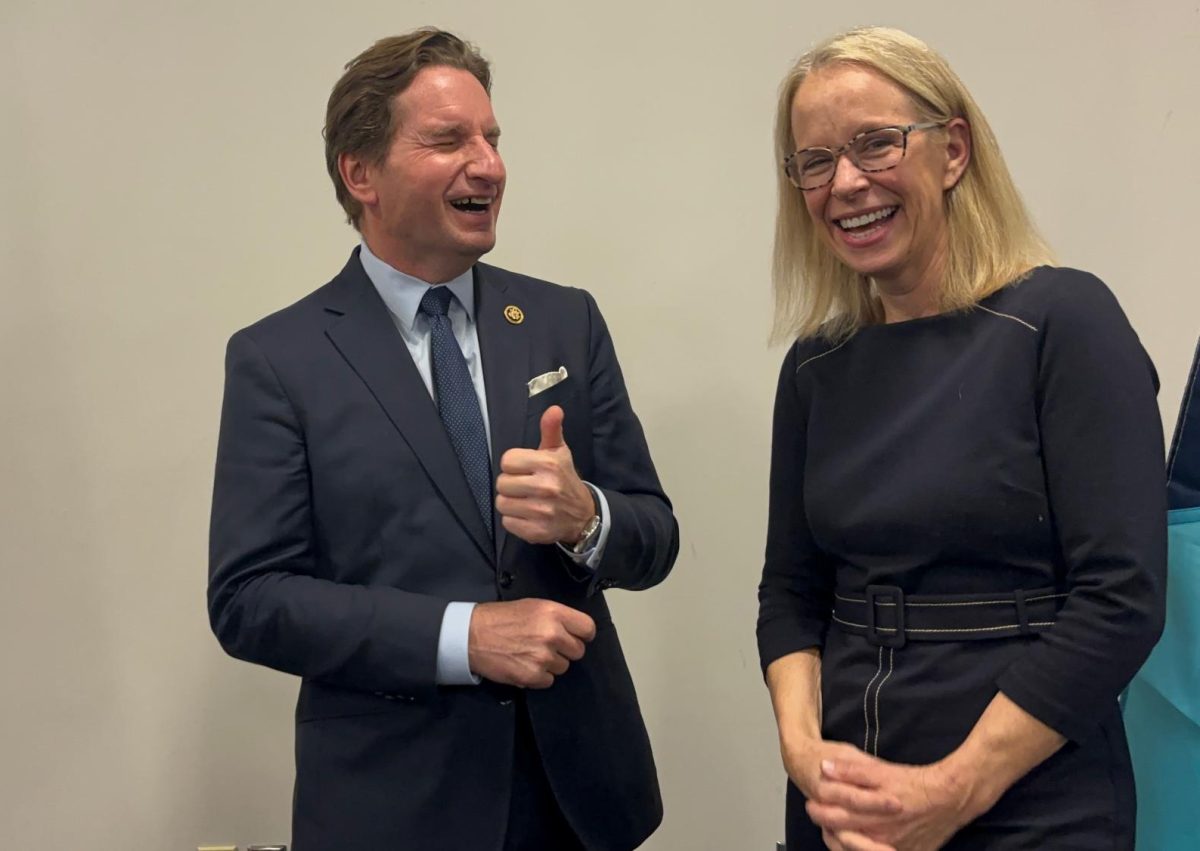Imagine this: You’re running late to class because of traffic. You rush to the east entrance door, only to find it locked. You look at your watch: 8:51, it reads. Devastated, you realize you have to walk around the building, making yourself even later to school.
This isn’t just a hypothetical. For students such as Romare Onishi ‘25, this situation has become a reality. “It’s kind of inconvenient…I don’t mind going through the front, really, but I think in the winter, it’ll be a drag.” Onishi said.
As soon as the announcement was made to the entire community in the JNA, the lighthearted tone of a deans’ assembly transformed into confusion and frustration. A few weeks later, students are still confused. “I don’t understand it…people are just going to walk in through the [Kenwood doors] instead,” James Thornton ‘25 said.
Sabina Peterson Rajalingam ‘25 echoed Thornton’s statements. I feel like it’s not really necessary, and it’s kind of annoying [to go] out and go get something and come back in.”
Alan Hodder ‘25 questioned the reasoning. “Why can’t I go through the [east door]? Why is everyone near the [east door], everyone comes in through the [east door], who have off-campus privileges, but we’re not allowed to go back in through the [east door]?”
However, not all students share that frustration. Fuzz Aafedt ‘25 believes that locking the east door is “the right call.” While it has been a struggle with construction, Aafedt thinks that “it keeps the students honest, having to actually get to school on time… it obviously sucks having to wake up earlier in the morning, but I think, I think it’ll be something that we all get used to pretty quickly,” he continued.
Assistant Director Sarah Warren revealed that these changes had been considered for a while. “[Locking the East Door] was a conversation that [former Upper School Director Joe] Ruggiero and I started with Gene Palauskas last year, but I believe the final decision was made by [Maren] Anderson at the start of this year,” Warren said. Anderson stated that the final decision was made by a committee including her, Warren, the deans, and the security staff.
Warren said that locking the door is an attempt to mitigate the sign-in problems that have recently plagued the Upper School: “Last year, we had quite a few issues with students not signing in or signing out, and that issue seemed to be particular to the east door. Some of that was about staffing, like if a security guard was walking around the building rather than sitting right at that door…that skyrocketed the number of people who wouldn’t sign in and sign out.”
Anderson added that the issues were related to the perception of freedom students have. “We have kind of this scaffolded idea of the freedom of getting to leave campus… what we were noticing and recognizing is that some students who did not have that privilege were still leaving and not signing in or out. Some students were actually bringing other students with them that were not supposed to be leaving… and so we were saying, Why is this happening? What kind of expectation setting do we need to do? That’s part of the reason that we had that assembly at the beginning of the year where we’re trying to reset expectations of ‘these are the rules that we’re asking you to abide by, and all of that has to do with safety.’”
However, despite the door being closed for student entry, there will still be a security guard positioned there. When Peterson Rajalingam heard about the security guard still being there, she was confused. “What’s the point of having close if there’s already all the security there?” she questioned.
Frustrated students should voice their concerns to Anderson and Warren, who both emphasized that they are open to students’ thoughts on the door closure. “We are absolutely open. We want to know how something is impacting the students. You know, we come from a perspective of trying to do the best that we can in terms of the administration and the structure that we have in the adults in the building, and we know that it does have an impact on the students and part of this is because students weren’t following those expectations,” Anderson said.
In addition, just because the door is closed right now doesn’t mean it’s a permanent change. “If we start seeing students responding better to the sign-in and sign-out policy, [reopening that door is] something we can consider,” Anderson added.










